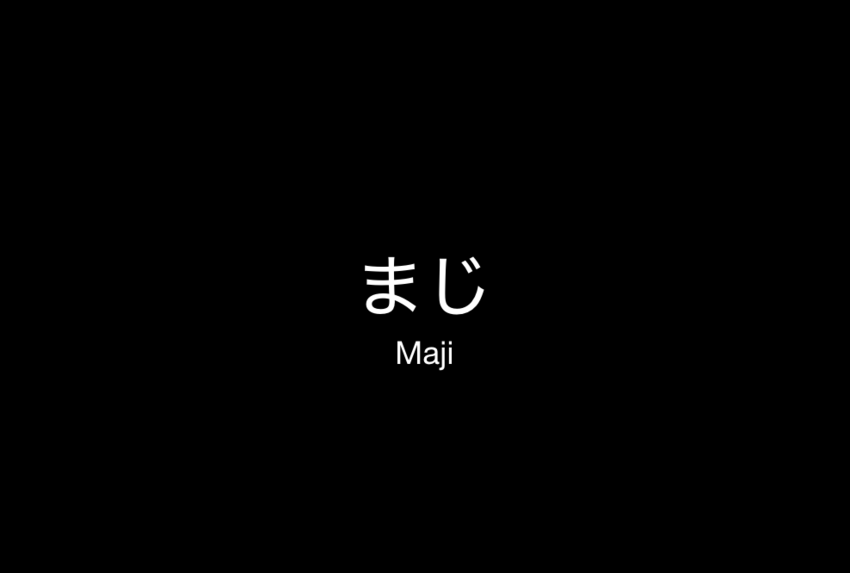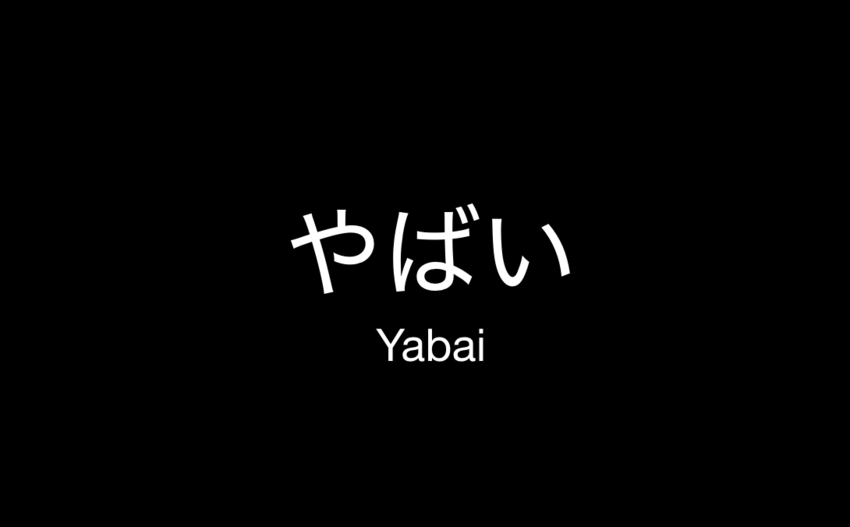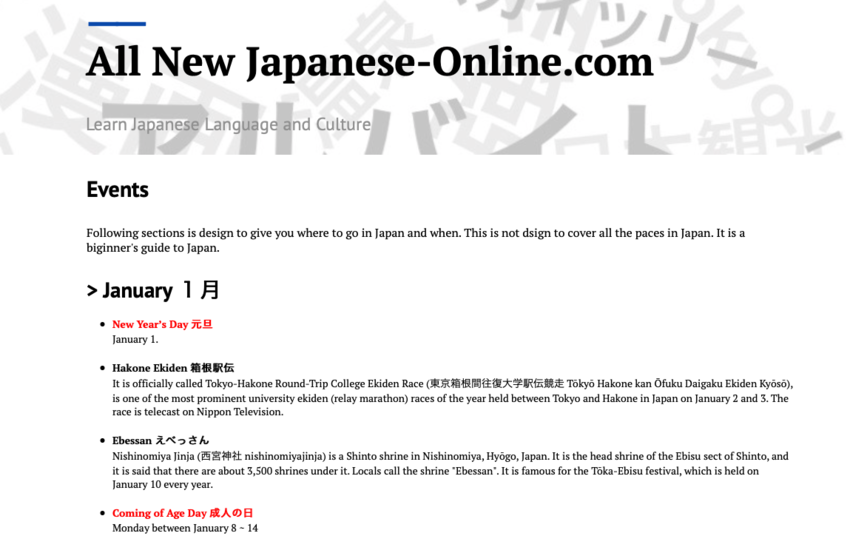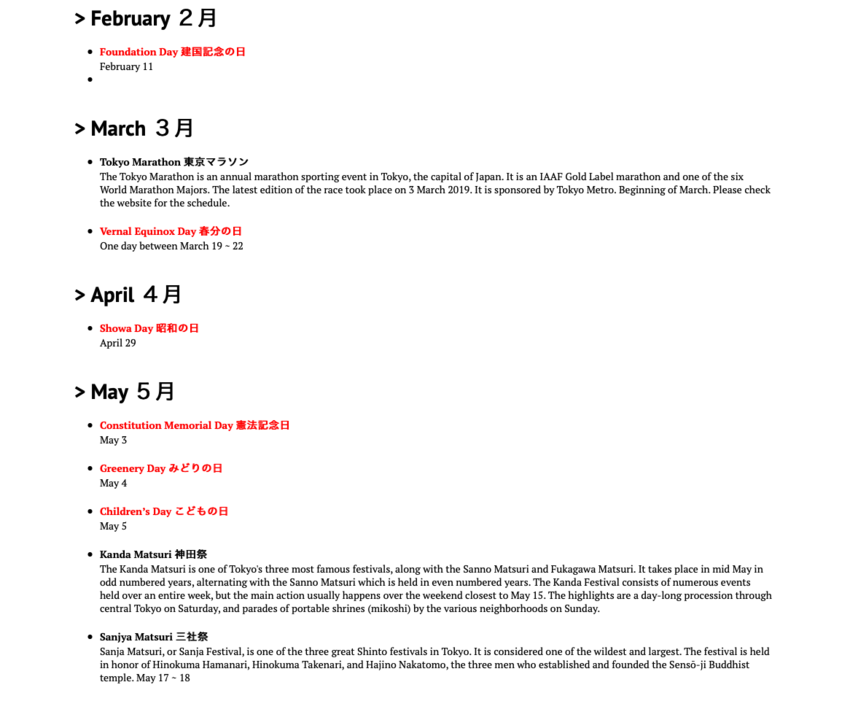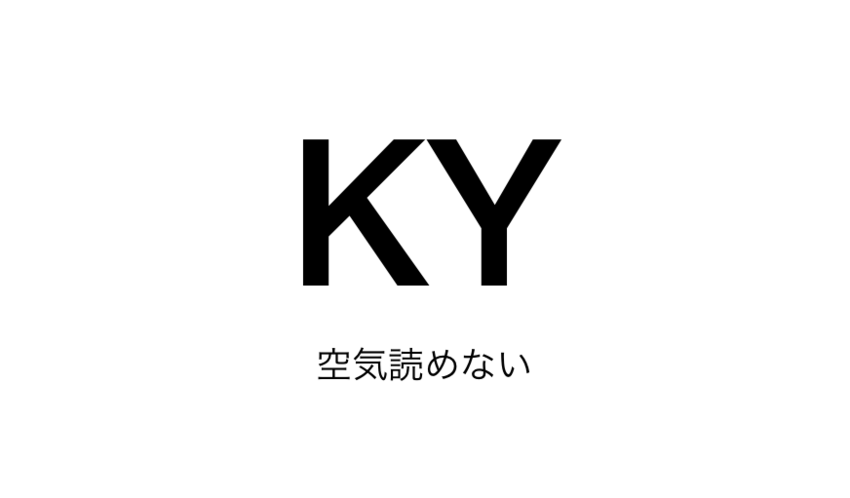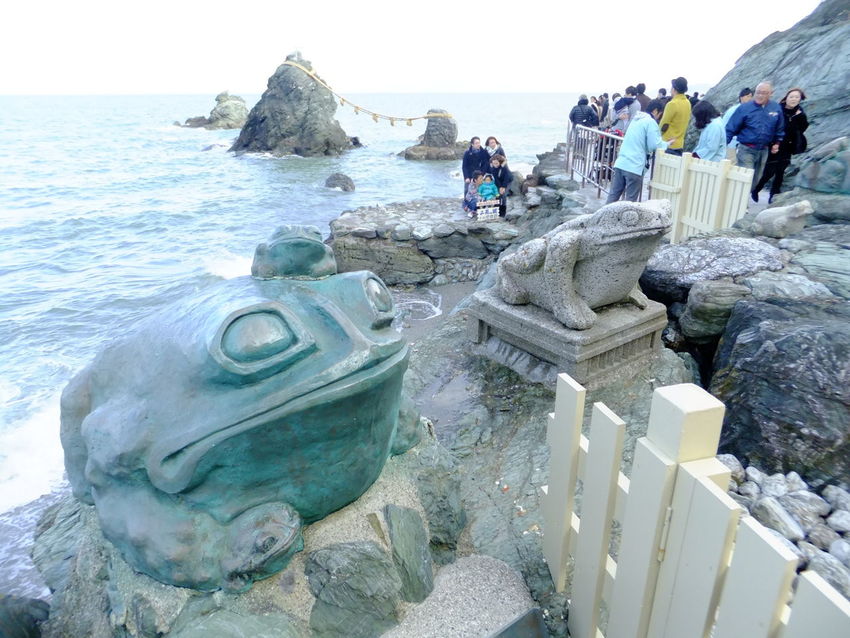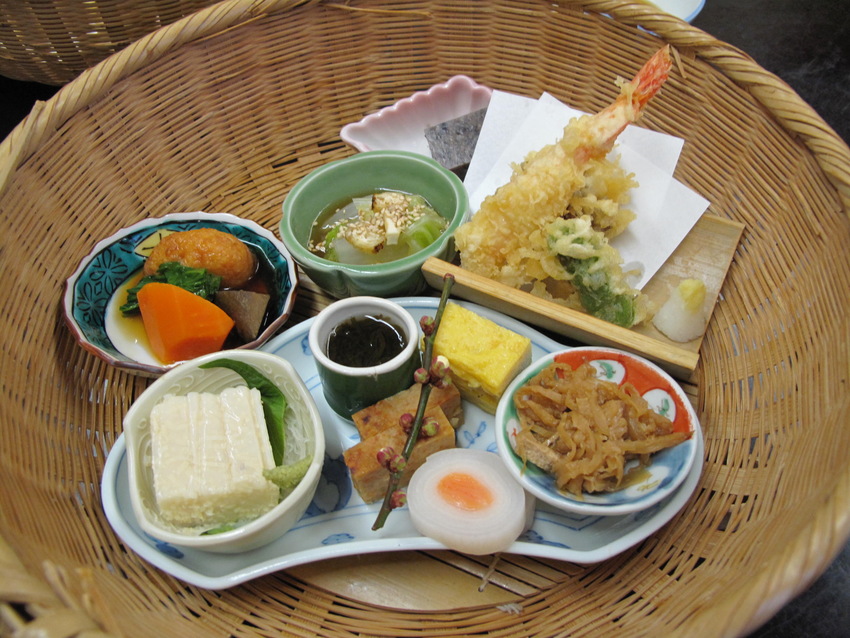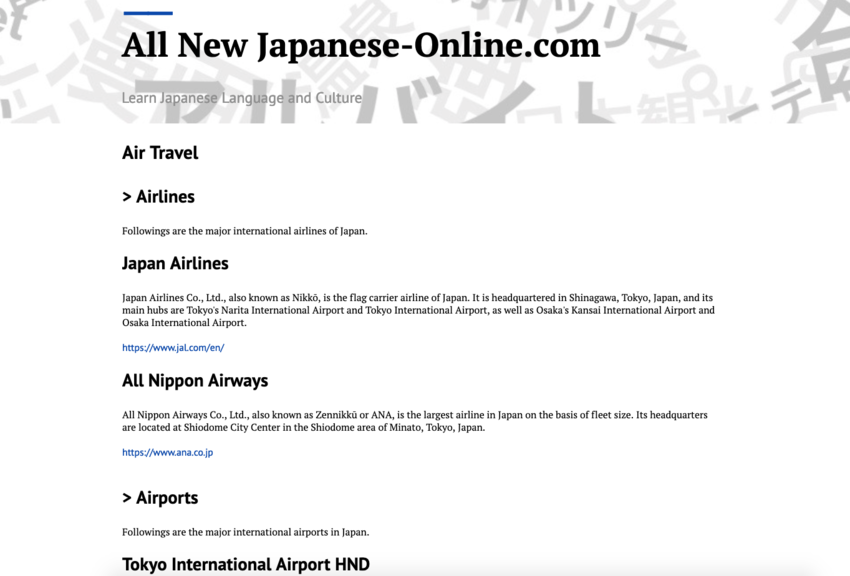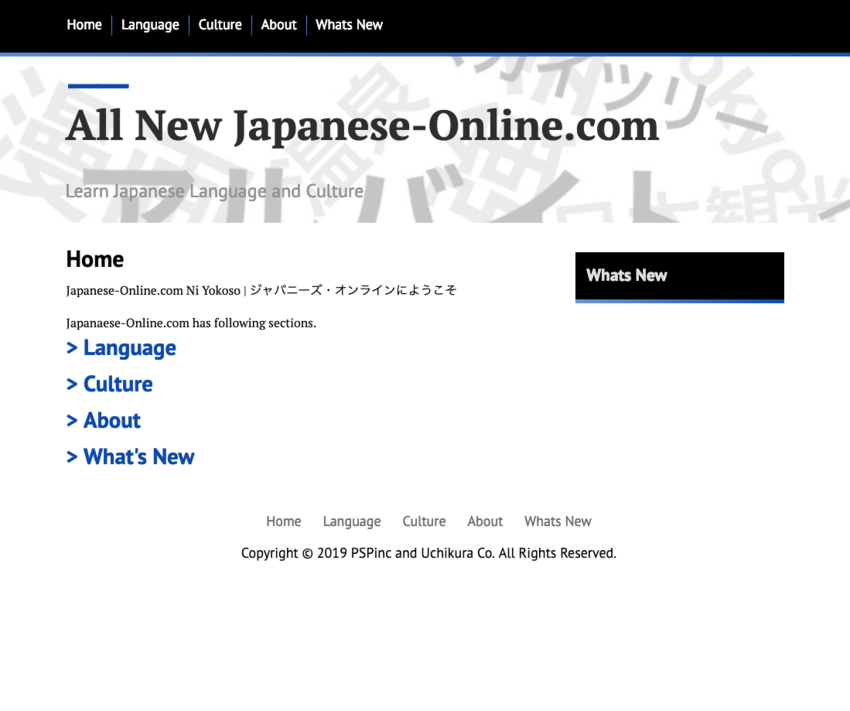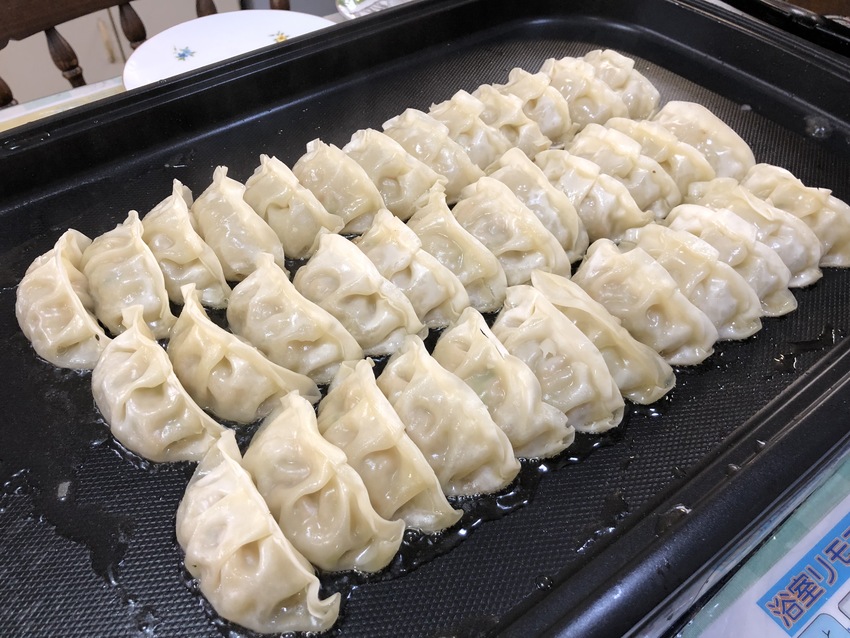- Hashtag "#madeinjapan" returned 555 results.
まじ "Maji" is a word people to express their surprise.
I think the word Maji came from the word Majime (Serious) and got shortened.
Maji means "Really?" or "Are you kidding?"
You can answer by saying "Maji" too.
So the conversation can go like this.
Question: まじ(Seroiusely?)
Answer: まじ(Seriously!)
The straight translation of やばい (Yabai) is "dangerous".
But there is a second meaning for Yabai.
You can use やばい to express
- Super Good
- Extremely Well
- Unbelievable
One of the sections that we are working is called "Events" ... In addition to hose listed above, if you think I should include some events, please contact me.
In Japanese lingo, it is "reading the air" (空気を読む)and for every person deemed to be lacking in such skill, the term "KY" ("cannot read the air, "Kuki Yomenai," 空気読めない) is ruthlessly (albeit sometimes jokingly) applied.
![Wishing people ...]() Wishing people to カエル (Kaeru/Flog) safely at Ise.
Wishing people to カエル (Kaeru/Flog) safely at Ise.
![Sig at Airport say Welcome Ba...]() Sig at Airport say Welcome Back Home in Japanese.
Sig at Airport say Welcome Back Home in Japanese.
When you come home (back) ... people say 「おかえりなさい」(Okaerinasai).
Okaerinasai (おかえりなさい) is a Japanese greeting on returning home.
帰る(Kaeru) means returning home.
The same "Kaeru" also mean カエル(flog). At 伊勢 (Ise) there are many flog figures near the beach. This is to hope people to come home safely from the fishing.

![New Japanese-Online ... List of...]()
Japanese Foods
Here ares some of the Japanese food you should try when you visit Japan. There are much more local and traditional Jaopanese foods which you need to discover yourself.
> Nattō 納豆
Nattō is a traditional Japanese food made from soybeans fermented with Bacillus subtilis var. natto. Some eat it as a breakfast food. It is served with soy sauce, karashi mustard and Japanese bunching onion. Nattō may be an acquired taste because of its powerful smell, strong flavor, and sticky, slimy texture.
> Umeboshi 梅干し
Umeboshi are fermented ume fruits common in Japan. The word "umeboshi" is often translated into English as "Japanese salt plums", "salt plums" or "fermented plums". Ume is a species of fruit-bearing tree in the genus Prunus, which is often called a plum but is actually more closely related to the apricot.
> Surume するめ
Dried shredded squid is a dried, shredded, seasoned, seafood product, made from squid or cuttlefish, commonly found in coastal Asian countries, Russia, and Hawaii. The snack is also referred to as dried shredded cuttlefish.
> Chazuke 茶漬け
Chazuke or ochazuke is a simple Japanese dish made by pouring green tea, dashi, or hot water over cooked rice.
> Oden おでん
Oden is a Japanese one-pot dish consisting of several ingredients such as boiled eggs, daikon, konjac, and processed fishcakes stewed in a light, soy-flavored dashi broth. Oden was originally what is now commonly called misodengaku or simply dengaku; konjac or tofu was boiled and eaten with miso.
> Dengaku 田楽
Dengaku were rustic Japanese celebrations that can be classified into two types: dengaku that developed as a musical accompaniment to rice planting observances and the dengaku dances that developed in conjunction with sangaku.
> Okonomiyaki お好み焼き
Okonomiyaki is a Japanese savory pancake containing a variety of ingredients. The name is derived from the word okonomi, meaning "how you like" or "what you like", and yaki meaning "cooked". Okonomiyaki is mainly associated with the Kansai or Hiroshima areas of Japan, but is widely available throughout the country.
> Monjayaki もんじゃ焼き
Monjayaki is a type of Japanese pan-fried batter, popular in the Kantō region, similar to okonomiyaki, but that uses different liquid ingredients.
> Takoyaki たこ焼き
Takoyaki is a ball-shaped Japanese snack made of a wheat flour-based batter and cooked in a special molded pan. It is typically filled with minced or diced octopus, tempura scraps, pickled ginger, and green onion.
> Akashiyaki 明石焼き
Akashiyaki is a small round dumpling from the city of Akashi in Hyōgo Prefecture, Japan. The dumpling is made of an egg-rich batter and octopus dipped into dashi before eating. Locals refer to it simply as tamagoyaki. Modern style akashiyaki first started selling in the Taishō period by a yatai shopper Seitarō Mukai.
> Unadon うな丼
Unadon is a dish originating in Japan. It consists of a donburi type large bowl filled with steamed white rice, and topped with fillets of eel grilled in a style known as kabayaki, similar to teriyaki. The fillets are glazed with a sweetened soy-based sauce, called tare and caramelized, preferably over charcoal fire.
> Oyakodon 親子丼
Oyakodon, literally "parent-and-child donburi", is a donburi, or Japanese rice bowl dish, in which chicken, egg, sliced scallion (or sometimes regular onions), and other ingredients are all simmered together in a kind of soup which is made with soy sauce and stock, and then served on top of a large bowl of rice. The name of the dish is a poetic reflection of the fact that both chicken and egg are used in the dish.
Several other Japanese dishes pun on the parent-and-child theme of oyakodon. Tanindon (他人丼), literally "stranger bowl", is otherwise identical but replaces the chicken with beef.
> Onigiri おにぎり
O-nigiri, also known as o-musubi, nigirimeshi, rice ball, is a Japanese food made from white rice formed into triangular or cylindrical shapes and often wrapped in nori.
> Spaghetti Napolitan ナポリタン
Spaghetti napolitan, also known as spaghetti naporitan, is a Japanese style pasta dish made with a sauce that is tomato ketchup based.
> Ramen ラーメン
Ramen is a Japanese dish. It consists of Chinese-style wheat noodles served in a meat or fish-based broth, often flavored with soy sauce or miso, and uses toppings such as sliced pork, nori, menma, and scallions.
> Tonkatsu とんかつ
Tonkatsu is a Japanese dish which consists of a breaded, deep-fried pork cutlet. The two main types are fillet and loin. It is often served with shredded cabbage.
> Tempura 天ぷら
Tempura is a Japanese dish usually consisting of seafood or vegetables that have been battered and deep fried. The dish was influenced by fritter-cooking techniques introduced by Portuguese residing in Nagasaki in the 16th century, and the name "tempura" relates to that origin.
> Tendon 天丼
A type of donburi (a one-bowl meal of rice topped with any meat or vegetable dish), tendon is crisp tempura laid over freshly steamed rice and topped with a delicious light soy dressing. Enjoy for lunch, or as a light evening meal.
> Udon うどん
Udon is a type of thick wheat flour noodle used frequently in Japanese cuisine. It is often served hot as a noodle soup in its simplest form, as kake udon, in a mildly flavoured broth called kakejiru, which is made of dashi, soy sauce, and mirin. It is usually topped with thinly chopped scallions.
> Soba そば
Soba is the Japanese name for buckwheat. It usually refers to thin noodles made from buckwheat flour, or a combination of buckwheat and wheat flours. They contrast to thick wheat noodles, called udon. Soba noodles are served either chilled with a dipping sauce, or in hot broth as a noodle soup.
> Kishimen きしめん
Flat Noodle. Kishimen is a broad and flat noodle often seen in the Nagoya area.
> Karate からあげ
Unassuming option for Japanese/Hawaiian fusion dishes, with signature Japanese-style fried chicken.
> Yakisoba やきそば
Yakisoba, literally "fried buckwheat", is a Japanese noodle stir-fry dish. Although soba means buckwheat, yakisoba noodles are actually made from wheat flour, and are typically flavored with a condiment similar to oyster sauce. The dish first appeared in food stalls in Japan during the early 20th century.
> Sushi 寿司
Sushi is a Japanese dish of prepared vinegared rice, usually with some sugar and salt, accompanying a variety of ingredients, such as seafood, vegetables, and occasionally tropical fruits.
> Sashimi さしみ
Sashimi is a Japanese delicacy consisting of very fresh raw fish or meat sliced into thin pieces and often eaten with soy sauce.
> Yakitori 焼き鳥
Yakitori is a Japanese type of skewered chicken. Its preparation involves skewering the meat with kushi, a type of skewer typically made of steel, bamboo, or similar materials. Afterwards, they are grilled over a charcoal fire. During or after cooking, the meat is typically seasoned with tare sauce or salt.
> Japanese Curry カレー
Japanese curry is one of the most popular dishes in Japan. It is commonly served in three main forms: curry rice, curry udon, and curry bread. Curry rice is most commonly referred to simply as "curry". A wide variety of vegetables and meats are used to make Japanese curry.
> Gyudon 牛丼
Gyūdon, literally beef bowl, is a Japanese dish consisting of a bowl of rice topped with beef and onion simmered in a mildly sweet sauce flavored with dashi, soy sauce and mirin. It sometimes also includes shirataki noodles, and is sometimes topped with a raw egg or a soft poached egg.
> Shabu-Shabu しゃぶしゃぶ
Shabu-shabu is a Japanese nabemono hotpot dish of thinly sliced meat and vegetables boiled in water and served with dipping sauces. The term is onomatopoeic, derived from the sound emitted when the ingredients are stirred in the cooking pot. The food is cooked piece by piece by the diner at the table.
> Kushikatsu 串カツ
Kushikatsu, also known as kushiage, is a Japanese dish of deep-fried skewered meat and vegetables. In Japanese, kushi refers to the skewers used while katsu means a deep-fried cutlet of meat.
> Motsunabe モツ鍋
Motsunabe is a type of nabemono in Japanese cuisine, which is made from beef or pork tripe or other offal. It is a popular stew made with guts portions of various types of meat, prepared in a conventional kitchen cooking pot or a special Japanese nabe pot.
> Kitsune Udon きつねうどん
Kitsune Udon is Udon noodles in hot Dashi soup topped with Aburaage that has been cooked in a sweet and salty sauce. ... Kitsune Udon is one of the soul foods for Kansai people. Aburaage, fried thin tofu, is often cooked and seasoned strongly with soy sauce and sugar, as you may know from this dish and also in Inarizushi.
> Tanuki Udon たぬきうどん
Tanuki Udon is a udon noodle soup usually served in a hot dashi broth and topped with tempura bits called tenkasu. However, during the summer months this dish is often prepared cold. It's very refreshing and super easy to prepare.
> Yaki Udon 焼きうどん
Yaki udon is a Japanese stir fry dish consisting of thick, smooth, white udon noodles mixed with a soy based sauce, meat, and vegetables. It is similar to yakisoba, which involves a similar stir fry technique using soba noodles.
> Korokke コロッケ
Korokke is the Japanese name for a deep-fried dish originally related to a French dish, the croquette.
![Beginning of the culture sectio...]() Beginning of the culture section on http://japanese-online.com
Beginning of the culture section on http://japanese-online.com
The language section is complete ... we re starting to wrk on the culture section. There will be a lot of information. If you would like to know something specific about the Japanese language and culture, please let us know.
http://japanese-online.com/
![This new site is under constru...]() This new site is under construction.
This new site is under construction.
http://japanese-online.com/
The language section is complete ... we ares rating to work on Culture section.
http://japanese-online.com/
---------- に行きたいです。(いきたいです)
---------- Ni Ikitaidesu.
東京 オリンピックに 行きたいです。
とうきょう おりんぴっくに いきたいです。
Tokyo Olympic Ni Ikitaidesu.
Question
東京 オリンピックに 行きたいですか。
とうきょう おりんぴっくに いきたいですか。
Tokyo Olympic Ni Ikitaidesu Ka.
By adding か, at the end, you can make it into a question.
We are rebuilding Japanese-Online.com ...
I love Gyoza ... I can eat a half of this plate ...
How do you order Gyoza?
餃子 を 2皿 ください
ぎょうざ を ふたさら ください
Give me two plates of Gyoza
I am working on rebuilding and upgrading https://www.japanese-online.com
- If you are a bloguru member, please login.
Login
- If you are not a bloguru member, you may request a free account here:
Request Account


